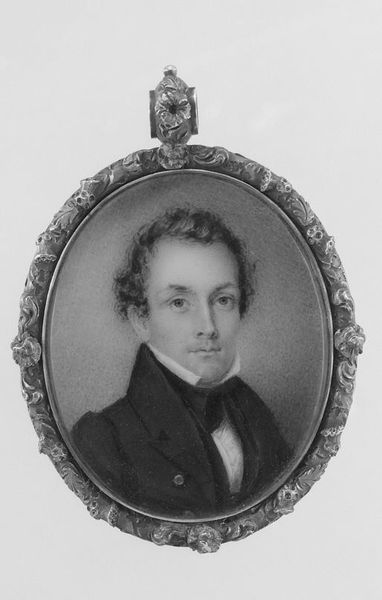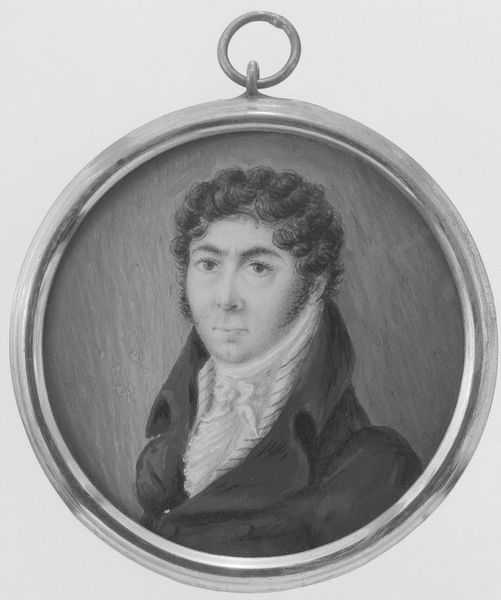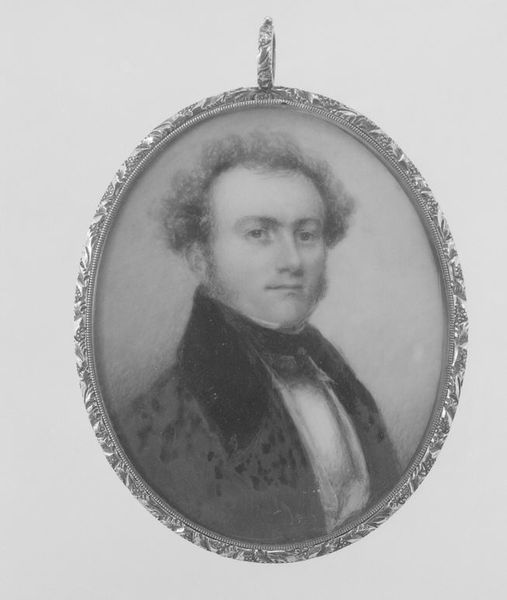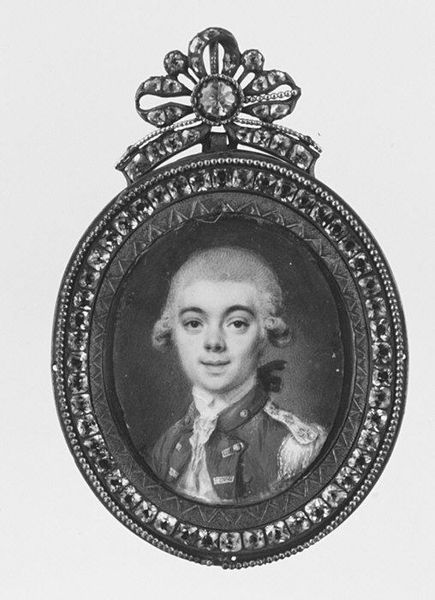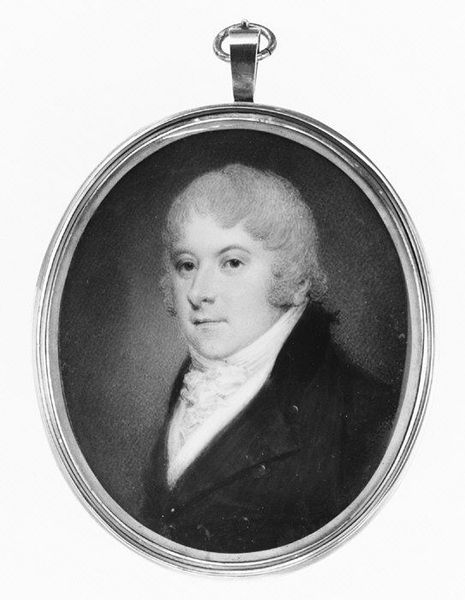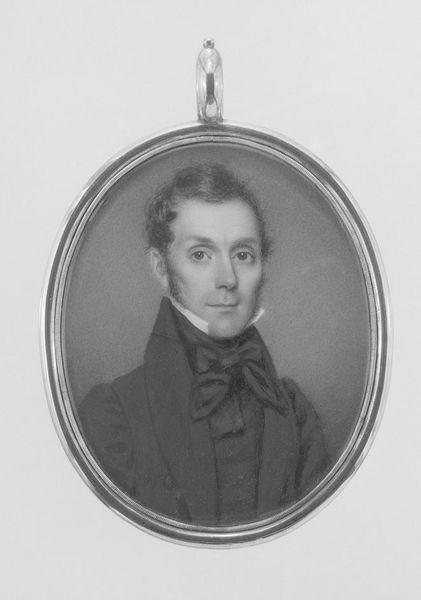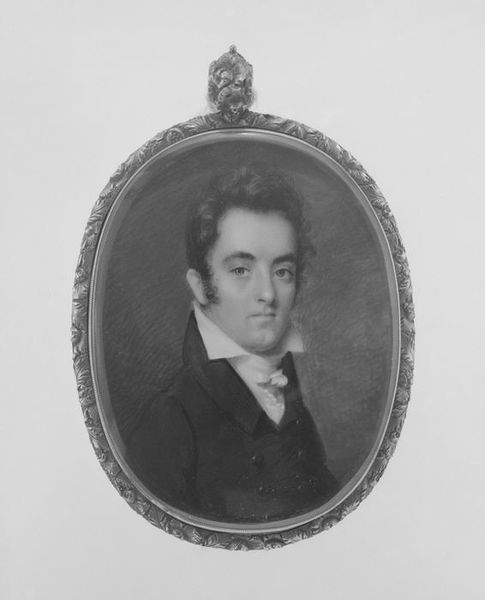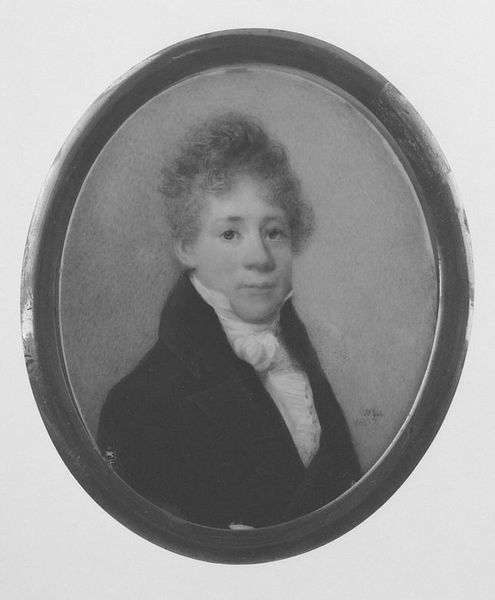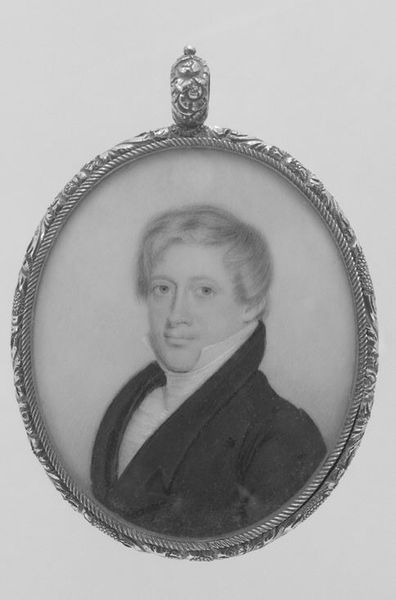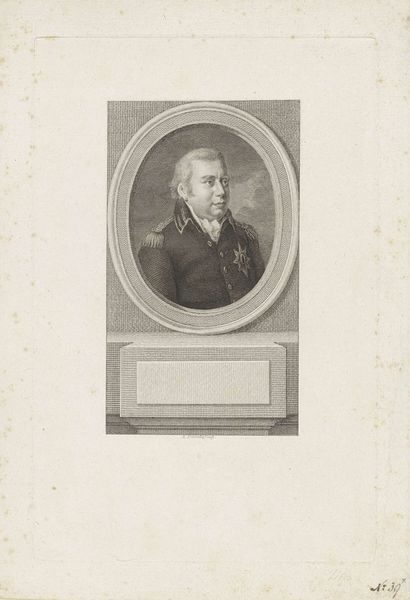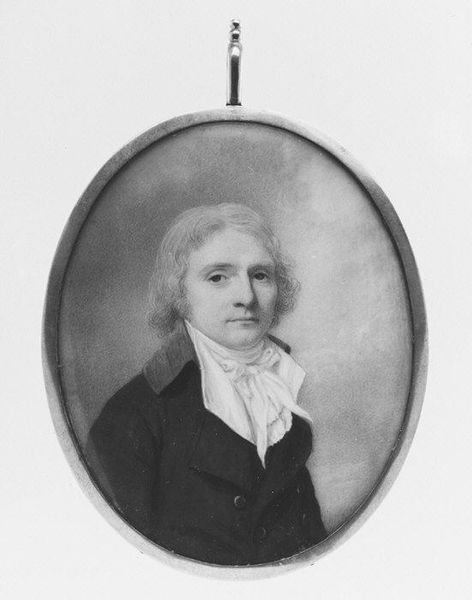
drawing, paper, pencil
#
portrait
#
drawing
#
paper
#
intimism
#
romanticism
#
pencil
#
miniature
Dimensions: 2 7/8 x 2 5/16 in. (7.2 x 5.9 cm)
Copyright: Public Domain
Curator: Here we have Joseph Wood’s "Portrait of a Gentleman" from 1812, currently residing here at The Met. What strikes you about it? Editor: It has such a delicate feel to it. Looking at the intricate details in the frame, the piece evokes a sense of preciousness, like a carefully crafted object intended for intimate viewing. It seems so small too. Curator: It is indeed. Portrait miniatures like this gained popularity for intimate, portable keepsakes. Think about the materials: pencil on paper, a readily accessible means of production which democratized portraiture to a degree, though definitely for a specific class. The gentleman's gaze and formal attire tells us much about societal expectations of men from this era. What’s your take? Editor: I'm thinking about the accessibility you mention, but also about the labor invested. Pencil on paper gives an immediacy, but consider the number of marks made on such a miniature scale. We often forget about how laborious the process of making drawings used to be, the specific and highly skilled hand that formed those tiny lines, how materials impacted distribution of art. Curator: Precisely. Consider too, how portraiture like this communicated power dynamics in the family and society. These were more than keepsakes; they were statements of belonging and social position. How might its purpose relate to current means of image making and portraiture today, do you think? Editor: Now we use photography for keepsakes and status updates, of course, it begs the question, is this simply an early modern headshot on social media? What I find striking is how our present moment is also so obsessed with capturing oneself on display in a similar way. The scale has shifted but the social intention to mark oneself and one's class is persistent. The medium truly shaped both making and disseminating likeness in the 19th century, much as photography and the Internet do today. Curator: I concur, thinking about accessibility allows one to look at portraiture in relationship with socio-economic context. I think exploring Wood’s process through materials allows the conversation to encompass identity and its dissemination. Editor: It has shifted my perception by getting a stronger sense of production of social meaning around art.
Comments
No comments
Be the first to comment and join the conversation on the ultimate creative platform.
